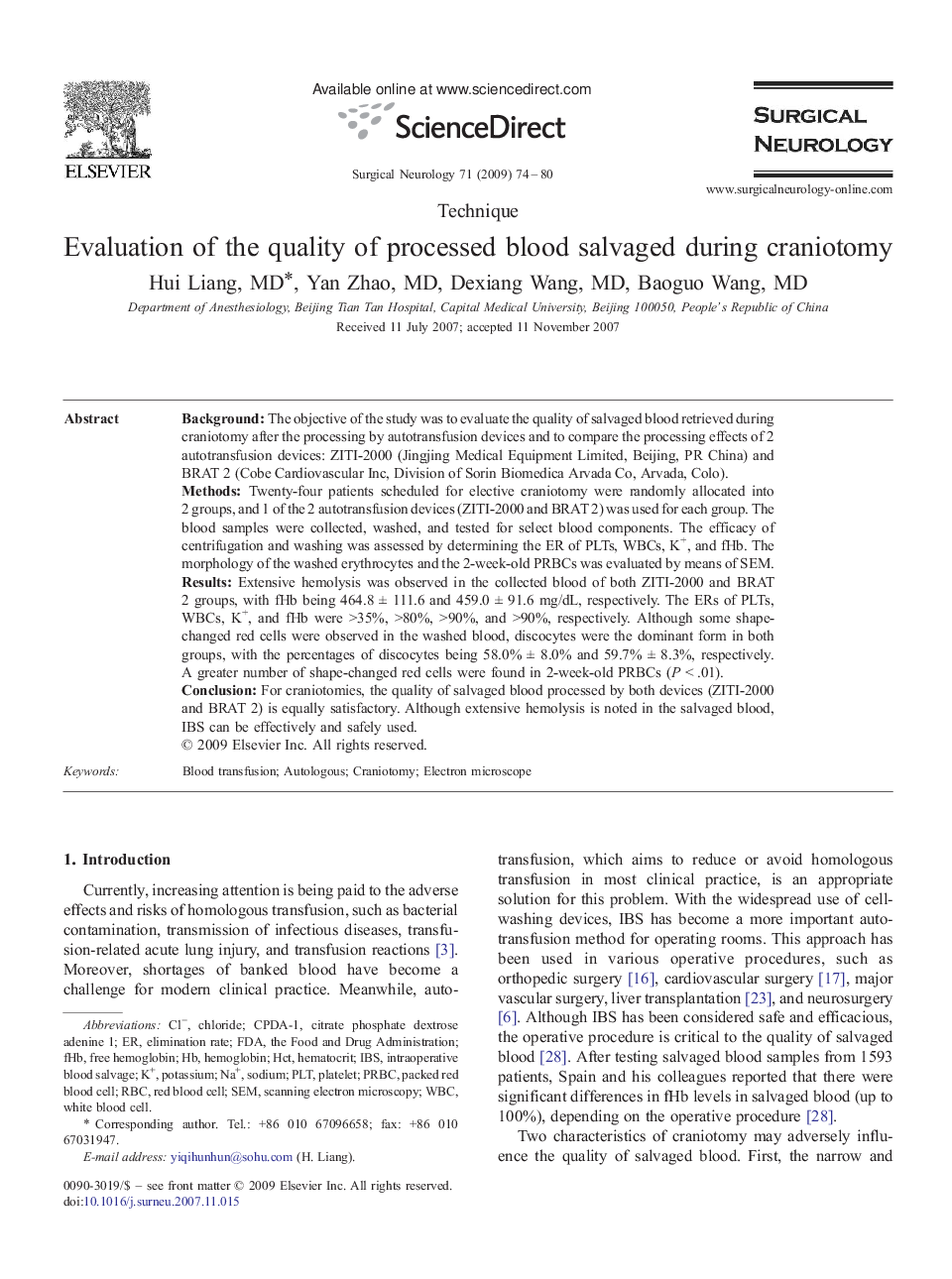| Article ID | Journal | Published Year | Pages | File Type |
|---|---|---|---|---|
| 3092419 | Surgical Neurology | 2009 | 7 Pages |
BackgroundThe objective of the study was to evaluate the quality of salvaged blood retrieved during craniotomy after the processing by autotransfusion devices and to compare the processing effects of 2 autotransfusion devices: ZITI-2000 (Jingjing Medical Equipment Limited, Beijing, PR China) and BRAT 2 (Cobe Cardiovascular Inc, Division of Sorin Biomedica Arvada Co, Arvada, Colo).MethodsTwenty-four patients scheduled for elective craniotomy were randomly allocated into 2 groups, and 1 of the 2 autotransfusion devices (ZITI-2000 and BRAT 2) was used for each group. The blood samples were collected, washed, and tested for select blood components. The efficacy of centrifugation and washing was assessed by determining the ER of PLTs, WBCs, K+, and fHb. The morphology of the washed erythrocytes and the 2-week-old PRBCs was evaluated by means of SEM.ResultsExtensive hemolysis was observed in the collected blood of both ZITI-2000 and BRAT 2 groups, with fHb being 464.8 ± 111.6 and 459.0 ± 91.6 mg/dL, respectively. The ERs of PLTs, WBCs, K+, and fHb were >35%, >80%, >90%, and >90%, respectively. Although some shape-changed red cells were observed in the washed blood, discocytes were the dominant form in both groups, with the percentages of discocytes being 58.0% ± 8.0% and 59.7% ± 8.3%, respectively. A greater number of shape-changed red cells were found in 2-week-old PRBCs (P < .01).ConclusionFor craniotomies, the quality of salvaged blood processed by both devices (ZITI-2000 and BRAT 2) is equally satisfactory. Although extensive hemolysis is noted in the salvaged blood, IBS can be effectively and safely used.
